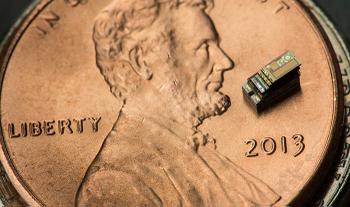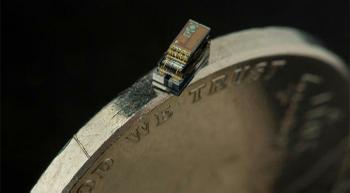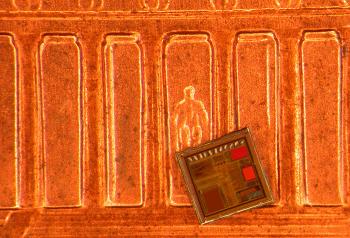The University of Michigan's computer science department has been developing the Michigan Micro Mote (M^3) computer for over a decade, reports CBS News. The M^3 computer is now ready for production.
Claimed to be the smallest autonomous computer in the world, the M^3 is smaller than a grain of rice. Despite its miniature size the computer is said to be capable of taking pictures, reading temperatures, recording pressure, radio communication, and more. The flexibility afforded by its compactness means that the device will be popular in medical, industrial and IoT applications.
It is foreseen that the M^3 will be injected into the human body to provide medical sensor readings including ECG, pressure and temperature measurements. In industrial use the computer can be placed deep into oil wells to sense remaining pockets of oil resources. In the IoT and for consumers the M^3 could be useful in many parts of the intelligent home and even be implanted simply to track significant personal possessions.
One of the greatest challenges to making such a miniature computer was down to battery power. The University of Michigan's Prof. David Blaauw explains that "What people don't realize is a very large part of the volume of a computer for instance in a cellphone is actually consumed by the battery." So the team made sure to reduce required power to the minimum to keep the whole system as small as possible.
Another challenge for a tiny computer is programming it and recharging it. The M^3 uses a light interface for both duties. A high frequency strobe is used to send the required programming data to the computer. The computer charges its tiny battery from light and even ambient light in a room with no natural sunlight can be enough to power it perpetually. The Phoenix processor inside the M^3 requires just 500pW in standby mode.
Phoenix processor on a coin edge
As mentioned in the intro, the M^3 is now, after many years development, ready for production. However the Michigan scientists aren't going to rest there as they have began to design even smaller computers referred to as 'smart dust'.










